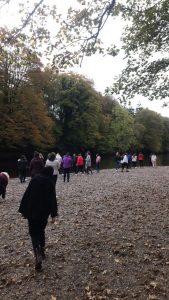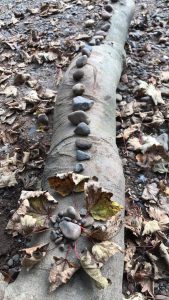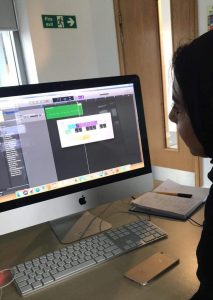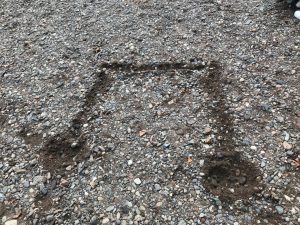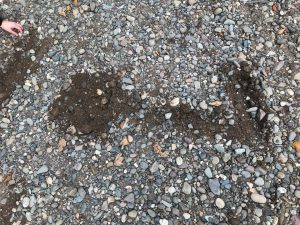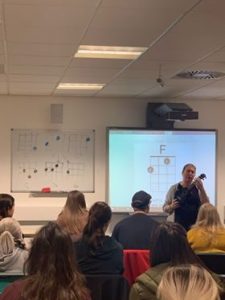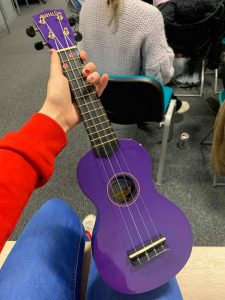During this week we had our introduction to the Music area of the Expressive Arts. We first acknowledged the importance of music in classrooms. My knowledge of music is very minimal and so learning that incorporating music in classroom can have educational benefits was interesting. I learned that music can be incorporated in the most subtle yet effective ways. During the workshop we listened to different pieces of music and were asked to write down one word describing how the music made us feel. This was interesting as it made me realise that different types of music can elicit different emotions. I was able to make a connection back to my placement last year where the teacher would play “cleaning up music” as the children tidied the classrooms. The music being fun and playful made the children feel energetic and they didn’t feel bad about cleaning. Another case in where the teacher used music to extract a desired emotion from the children was after lunch or a P.E class when she felt the children were too jumpy and overexcited. The teacher would play relaxing and soft music where the children would get a couple of minuets to wind down. This allowed them to feel more relaxed and adapt back to the classroom.

Music is beneficial as it allows children to develop their communication and collaboration skills (Dumont et al, 2017). Music is not a solitary subject, through music children play together and they sing together. music allows children to build their social skills. Musical experiences are all about participation, participating in something that is bigger than us. It is when every small role equates to something bigger and more meaningful, making every participant and every learner equally important. Through music children learn to compose, they learn to improvise, and they learn to perform. The power of music helps children become successful learners, effective contributors and responsible citizens. Music allows a gateway to learn about different cultures through native instruments such as the Sitar in India, the Bagpipes in Scotland and the Erhu in China. Through these instruments’ children can explore the musical and social cultures of each country. Later, during the music workshop we were played an instrumental piece that varied in tone, volume and speed. We were to create a short story that reacted to the music. For example, my short story was about a little boy that was being chased by a bully, where the music went faster, I depicted that the bully was getting closer to the boy. Where the music was much slower, I described the boy hiding out catching his breath. This was interesting activity as meant that I was actively listening to the changes in the music and creating a story that fit it. I feel this would be a good lesson to pitch to children in classrooms as it gives them an opportunity to explore the variations of the music and still use their creativity to come up with a interesting story. Later we got into groups and picked a story that we all agreed on, we picked my peers story about a boy that loses his kite and chases it into the sea with a shark. We created a comic strip and later presented it to the class. This activity allows children to work on their collaboration skills as they must agree on one story to create. Children also develop their presentation skills when delivering the story to the rest of class and explaining what parts of the music piece they reacted to. This allows them to develop their confidence in a short and comfortable setting as it is not a solo presentation, which is one of the reasons why I was comfortable presenting to my class.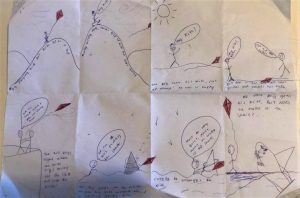
During the drama workshop it was my groups week to present our micro-teaching lesson. We decided to base our lesson on a movie called “Inside Out”. One of my peers decided this topic and we all agreed straight away, making that process very short and easy. Inside Out is about a young girl that has just moved to a new house, this sudden change has a bigger impact on her emotions than she and her family are aware of. I felt this movie would be a good inspiration piece as children would most likely be familiar with it making it more relevant and interesting. By basing our lesson on the movie, it meant that we were able to touch on the topic of emotions and the importance of being able to express yourself in an honest way. One of our lessons was handing out Inside Out certain characters to different groups that represented an emotion and asked each group to portray the emotion with out using words. I felt this activity went well as all groups participated fully. Applying on the feedback that Andrew gave to previous groups from last week, I tried to interact with the groups by asking what there thought process was. this meant that I was not just standing at the top of the room and giving out instructions but was involving myself in the activities. One part of our lesson that did not go according to plan was when we attempted to show the class a trailer of the movie so that those that were not aware of the movie would have a feel of what it was about. However, the audio was not working and so we gave the class a verbal synopsis of the movie. This minor set back was frustrating in the sense that we had to change our plans on such short notice, although it taught me no never fully rely on technology and always have a backup plan.

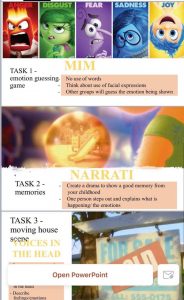
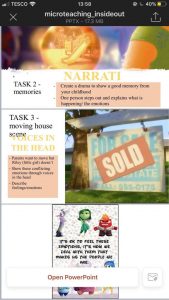
Reference
Dumont, E., Syurina, E., Feron, F. and van Hooren, S. (2017). Music Interventions and Child Development: A Critical Review and Further Directions. Frontiers in Psychology, 8.

